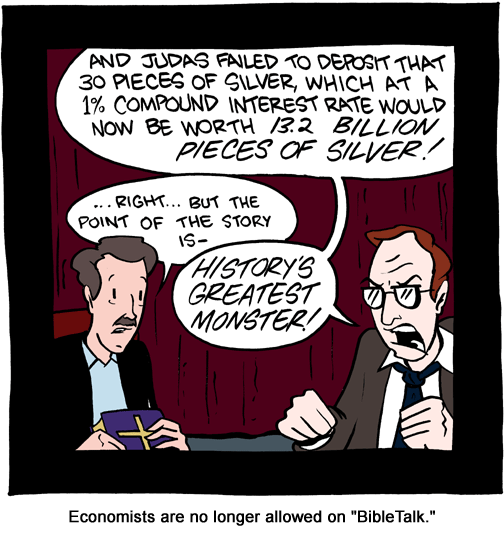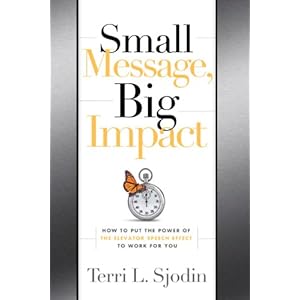My post 4 Ways to Flog the Inner Impulse Shopper is up in Free Money Finance’s March Money Madness tournament. Please take a moment to vote for me(Flog).
Thank you. That is all.
The no-pants guide to spending, saving, and thriving in the real world.
My post 4 Ways to Flog the Inner Impulse Shopper is up in Free Money Finance’s March Money Madness tournament. Please take a moment to vote for me(Flog).
Thank you. That is all.
 baby on the cheek.” width=”300″ height=”199″ />
baby on the cheek.” width=”300″ height=”199″ />For years, my kids shared my bed.
When my oldest was a baby, I was working a graveyard shift, so my wife was alone with the baby at night. It was easy to keep a couple of bottles in a cooler by the bed and not have to get out of bed to take care of him when he woke up once an hour to drink a full bottle.
Then he got older. And bigger. And bigger.
We tried to move him to his own bed a few times, but it never worked well. He’d scream if we put him in a crib, so we got him a bed at 9 months old. That just meant he was free to join us whenever he woke up. Brat.
We finally got him to voluntarily move to his own bed after his sister was born. Shortly after she was born, I woke up to see him using her as a pillow. To paint the proper picture, this kid is 5’9″ and wears size 12 shoes. At 11. When I woke him up to tell him what he was doing, he decided to sleep in his own bed.
Method #1 to get your kids in their own bed: Have kid 1 try to crush kid 2 and feel bad about it.
Method #1 isn’t a great solution.
Soon, baby #3 showed up and we had 2 monsters in bed with us again. Once they started getting bigger, it became difficult for the 4 of us to sleep. We tried to get them into their own beds. Unfortunately, even as toddlers, my kids had a stubborn streak almost as big as my own. Nothing worked.
Eventually, they got big enough that I was crowded right out of the bed. At least we had a comfortable couch.
Sleeping on a couch gets old.
When the girls got old enough to reason with, we had a choice: We either had to find a way to convince them they wanted to sleep in their own room, or we had to have a fourth brat for them to attempt to crush at night.
We went with bribery. Outright, blatant bribery.
We put a chart on the wall with each of their names and 7 boxes. Every night they slept in their own beds, they got to check a box. When all of the boxes were checked, they got $5 and a trip to the toy store.
It took 10 days to empty our bed and it’s been peaceful sleeping since. That’s $5 well-spent.
Have you done a family bed? How did it work? How long did it last?
Doctor appointments, speeding tickets and too much work. That’s what this week has been made of.

Finance links:
Why do the non-politician folks who want taxes raised think a fund for voluntarily paying extra is stupid? If they were sincere, they’d be contributing to that from the start. As it is, it’s just a demonstration of either hypocrisy or a looting spirit.
Paying off your Visa by charging it on…your other Visa doesn’t accomplish anything for you or for Visa. Even if you are GM and Visa is the federal government.
My wife and I are thinking of starting a potluck/boardgame night. Boardgames are a cheap way to spend a fun evening.
Misc links:
The iFixit Blog. Dedicated to teaching you how to fix your own gadgets.
I am not only a geek, I am a Halloween geek. The Stationery of Horror is full of want.
The Pareto Principle works. Even at work. I get 80% of my value from the time I spend writing blog posts. Err. Nevermind.
I was recently given an advanced reader copy of Small Message, Big Impact by Terri L. Sjodin. It’s a book on crafting an effective and persuasive elevator speech.

An elevator speech is, according the the author, “a brief presentation introducing a product, service, philosophy or an idea. The name suggests the notion that the message should be delivered in the time span of an elevator ride, up to about 3 minutes. Its general purpose is to intrigue and inspire a listener to want to hear more of the presenter’s complete proposition in the near future.” It’s a 3-minute speech you give to intrigue someone enough that they will let you give a real presentation.
A lot of people–probably most–use their 3 minutes of unexpected access as an “information dump”. They pour as much data as possible into their audience. According to Sjodin(and I agree!), and elevator speech needs to be primarily persuasive, not informative. You need to include enough information to back up your persuasive arguments, but too much information is at least as bad, if not worse, than too little.
An elevator speech is either a sales pitch or a waste of time. You are selling the right to give more detailed information at a later time. The elevator pitch is not about making the sale. It’s about advancing the ball toward the eventual sale.
Who needs an elevator pitch? You do. Everybody sells. Even if you don’t have a product, a service, or a business, you have yourself. Can you pitch your boss on why you deserve a raise or a promotion?
The author walks you through creating an elevator speech that takes advantage of Monroe’s Motivated Sequence to advance your goal, whatever that is. She’ll teach you how to grab your audience’s attention and make them recognize a need for change. You’ll offer a solution, help them see the super-ninja-awesome future you’re offering, and give them a clear call to action. All in 3 to 5 minutes. Small Message, Big Impact will also teach you to provide a clear progression through those steps, making it easy for your target to say yes.
You’ll learn the basic outline of an elevator speech, including how to grab your target’s interest, build a persuasive case, and establish credibility when you’ve been surprised with a few moments of access. The three pieces of any successful presentation, from an elevator speech to a full-day presentation are
One of the best ways to sound credible, which will assist your delivery like nothing else, is to use an authentic voice. Be sincere and sound it. Believe in the material and yourself. Know the material–inside and out–and practice it until you can deliver it smoothly, even if that means enlisting a friend for speech practice.
Of the books I’ve reviewed, I think this is my favorite. If you need to design an elevator speech or improve the one you’ve been using, you should read this book. Even if you don’t care about an elevator speech, the book provides a decent education on persuasive selling that easily carries over to the written word.
How would you(or do you) use an elevator speech?